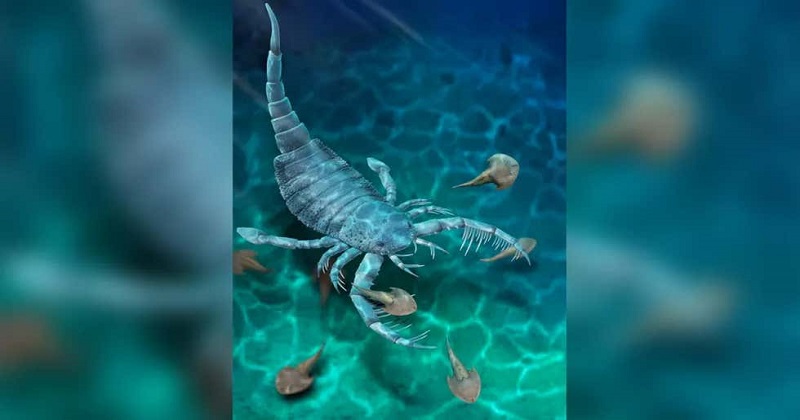
Imagine a scorpion! The picture that most people have in mind is of a poisonous critter that is about the size of a finger and lives largely on land. But imagine jumping into the sea and colliding with a meter-long scorpion!
The Nanjing Institute of Geology and Palaeontology recently discovered a scorpion fossil that wandered the sea floors of south China. Fortunately, the terrible species, which was 16 times longer than current-day scorpions, existed at least 400 million years ago and is no longer alive!
This dog-sized arachnid, Terropterus xiushanensis, was a family of today’s horseshoe crab and whip spider. It belonged to the mixopterids, a genus of eurypterids (sea scorpions) known for its specialised arms for seizing prey and featured comparable spiky attacking forelimbs.
‘Our knowledge of mixopterids is limited to only four species in two genera, which were all based on a few fossil specimens from the Silurian Laurussia 80 years ago,’ said the authors of the study. The well-preserved fossils add to our understanding of mixopterid morphological variation.
Also Read: 43-million-year-old fossil of 4-legged whale discovered in Egypt
The terrifying creature is said to have existed during the Silurian epoch, between 443.8 million and 419.2 million years ago, as an apex underwater predator with massive spiky arms called pedipalps that prowled on fish and mollusks.

According to previous study, sea scorpions were the apex predators long before barracudas or sharks evolved. Researchers hypothesised that sea scorpions utilised their tails, which were militarised by their serrated spiny points, to execute their victims based on eurypterid fossils.
T xiushanensis, on the other hand, is the first mixopterid to be discovered on the Gondwana supercontinent. When Pangaea’s huge continent split in two, Gondwana arose, implying an under-collecting bias in the group.
‘Future work, especially in Asia, may reveal a more cosmopolitan distribution of mixopterids and perhaps other groups of eurypterids,’ the researchers said.

Post Your Comments